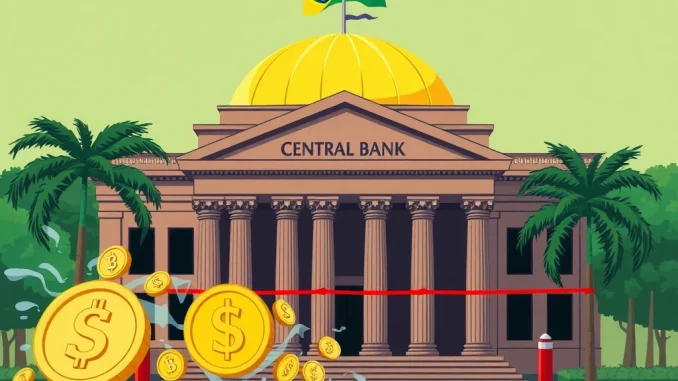
Attention cryptocurrency users and investors! Big news is coming out of South America that could impact how digital assets move across borders. Specifically, the focus is on stablecoins and new rules proposed by the Brazilian central bank.
What is the Proposed Brazil Crypto Regulation?
Brazil is actively working on its approach to digital asset oversight. The latest development involves a proposal from the Brazilian central bank to introduce tighter restrictions on stablecoin transfers. This is part of a broader effort to establish a comprehensive crypto regulatory framework for the nation.
According to reports, the proposed rules include specific limitations, particularly concerning sending stablecoins to wallets managed by entities located outside of Brazil. This move signals a clear intention by the central bank to exert greater control over cross-border stablecoin movements.
Why Tighter Brazil Stablecoin Rules Now?
Regulators globally are grappling with how to manage the risks associated with cryptocurrencies, and stablecoins are often a point of focus due to their potential use in facilitating international value transfers. While the specific motivations behind Brazil’s proposal aren’t fully detailed in the initial report, common reasons for such restrictions often include:
- Financial Stability: Ensuring that large, unregulated flows of stablecoins don’t pose risks to the traditional financial system.
- Anti-Money Laundering (AML) and Counter-Terrorist Financing (CFT): Making it harder to use stablecoins for illicit cross-border transactions.
- Capital Controls: Potentially managing capital outflows from the country.
- Consumer Protection: Aiming to bring more transparency and accountability to entities handling stablecoins.
This proposal is a key piece in the evolving Brazil crypto regulation landscape, which is also exploring a central bank digital currency (CBDC).
How Could This Impact Stablecoin Transfers?
If implemented, these proposed Brazil stablecoin rules could have several consequences:
- For Brazilian Users: Sending stablecoins to international exchanges or individuals abroad might become more difficult or require specific permissions.
- For International Platforms: Crypto exchanges and wallet providers serving Brazilian customers may need to adapt their services to comply with the new transfer limits.
- For Stablecoin Adoption: While aiming for control, overly strict rules could potentially hinder legitimate use cases for stablecoins in international trade or remittances for Brazilian residents.
- Regulatory Clarity (and Complexity): While establishing a framework, the specifics of implementation could create new complexities for compliance.
The development of this crypto regulatory framework is ongoing, and the final rules may differ from the initial proposal after consultation and feedback.
What Does This Mean for the Broader Crypto Regulatory Framework in Brazil?
This focus on stablecoin transfers highlights that Brazil’s approach to Brazil crypto regulation is becoming more granular. It suggests that regulators are moving beyond simply acknowledging crypto’s existence to addressing specific asset types and their unique characteristics, such as their ease of cross-border movement.
The proposal indicates a desire by the Brazilian central bank to ensure that digital assets operate within defined boundaries that align with national financial policies and security concerns. It’s a significant step in defining the future of crypto use in the country.
Looking Ahead: Navigating the New Brazil Stablecoin Rules
As the consultation process for this crypto regulatory framework continues, stakeholders in Brazil and internationally will be watching closely. The details of how these proposed limits on stablecoin transfers are structured and enforced will be critical.
For individuals and businesses using stablecoins in Brazil, staying informed about the final regulations will be essential to ensure compliance and understand how future transactions may be affected. This is a dynamic area, and adaptability will be key.
Summary
The Brazilian central bank has put forth a proposal for new Brazil crypto regulation that specifically targets stablecoin transfers, particularly those sent outside the country. This is a notable development within the evolving crypto regulatory framework aimed at increasing oversight and control over digital asset movements. While the final rules are yet to be determined, this move underscores the growing global trend of regulators seeking to integrate digital assets like stablecoins into existing financial oversight structures.



